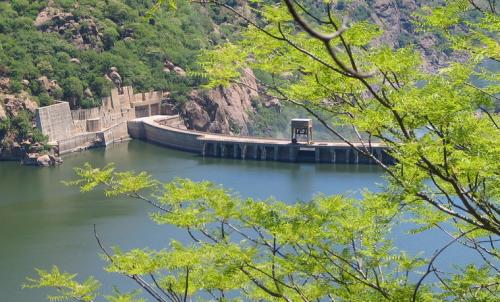Hydropower - A Future Source of Reliable Energy For the U.S.

The Pacific Northwest area of the United States is known for its large number of dams that bought clean, cheap and renewable energy to the rural areas.
This stimulated the economic development of the area, and even today, hydropower represents the most important source of electricity for the communities that live there.
The Pacific Northwest area is also known for the Pacific salmon, which is a migratory fish that grows in sea water, but returns to fresh water rivers for spawning.
Dams affecting wildlife in the area
To help migratory Pacific salmon move over hydroelectric dams, a device called 'salmon cannon' has been created.A salmon cannon works like this: the salmon swims to one end of the cannon, and fly through a wetted tube to be projected into the river at the other end of the cannon.
This way, the Pacific salmon escapes the hydroelectric dam being projected up river through the salmon cannon.
Before the creation of the salmon cannon, the Pacific salmon population plummeted sometimes by more than 90% due to the presence of the hydroelectric dams in the area.
A balance between hydropower, wildlife and people
A similar situation took place in other places on the planet because hydroelectric dams have the same problem all around the world, they block migratory fish from reaching their spawning grounds.
The same trade-off that took place in the Pacific Northwest area of the United States between clean electricity and environmental protection has been repeated around the world.
Hydroelectric power plants threaten the rivers and the fish living in them, so a balance is needed between renewable energy and ecosystems.
In the fight against climate change, we have to make similar trade-offs, and find a balance between them because renewable energy is needed to ditch fossil fuels, and the environment needs to be protected and conserved as well.
Hydropower a major source of renewable energy for mankind
Hydropower or hydroelectricity is very popular all over the world because we have at least one hydroelectric power plant in almost every country of the planet.
In some areas of the planet, hydropower brings life-changing electricity to remote and undeveloped areas.
In places where rainfall is unpredictable (areas affected by seasonal drought), hydroelectric dams can allow for year-around irrigated agriculture, and in areas with excess rainfall, dams are very useful for flood control.
Drawbacks of hydroelectric dams
The presence of a dam in an area where we have migratory fish affects the river traffic in both directions.
Dams not only affect migratory fish like salmon, they also change water quality in the reservoir, insect populations, riverside plants and actually the entire food web of the river.
Losing fish is also a major problem for local the local people because they depend on that fish for food and income.
The huge water reservoirs used by hydrelectric power plants with dams can flood huge areas of land and even people's homes, forcing in some cases even entire communities to relocate.
Dams also change the structure of a river because they slow the flow of water, which makes sand, silt and gravel in the water hit the dam and then drop onto the riverbed.
This creates a giant underwater sandbox just above the dam.
The sandbox created this way affects both the fish and the dam itself.
Conclusion
The only solution to balance hydropower, wildlife and people is to develop technological solutions to the problem.
Nature is the same all the time, technology must change to become friendlier with the environment.
Advertise on APSense
This advertising space is available.
Post Your Ad Here
Post Your Ad Here
Comments